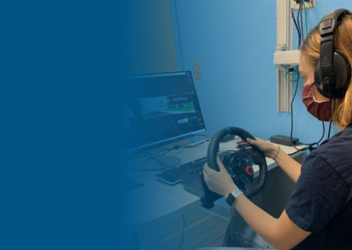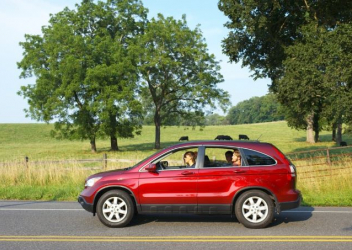Research In Action
Research In Action
Breadcrumb

I am a nurse scientist who studies health behaviors among adolescents with congenital heart disease (CHD). Prior to that, I was an Advanced Practice Provider in the Cardiac Center at Children’s Hospital of Philadelphia. It’s safe to say that Cardiac Center patients inspired my research questions, and as a new investigator, I reflect on that quite often.
It was good sign when we—the healthcare team—were preparing to send an adolescent with CHD home from the hospital with medications, medical devices and/or other complex therapies, and the teen seemed more concerned about getting a driver’s license, hanging out with friends, or whether a significant other would notice a scar. Those experiences always evoked a sense of accomplishment in me—we returned young patients with CHD back to their lives outside of the hospital. Great stuff!
At the same time, our team didn’t always have evidence-based answers to the many questions they asked, including is it safe to learn to drive? Driving is a hot topic for adolescents, including those with CHD.
What Driving May Be Like for Those With CHD
Learning to drive is often an exciting and life-changing sequence of events and a critical step towards becoming independent. Learning to drive can also introduce feelings of uncertainty, anxiety or fear, especially among parents. The excitement may outweigh uncertainty for many adolescents—including those with CHD—and they will pursue licensure.
It is well known that mastering the complex skill of driving introduces risk for crashes, a leading cause of death among adolescents. A great deal of research has been conducted to better understand how the adolescent brain handles driving; to measure adolescent driving abilities; and to develop and test evidence-based resources for becoming a more experienced driver. These findings apply to both healthy adolescents and adolescents with neurodevelopmental differences like attention-deficit hyperactivity disorder (ADHD) and autism. One question that remains unanswered is what driving might be like for adolescents with CHD.
Like their peers without CHD, driving may be critical for educational, employment and social purposes during adolescence and adulthood; however, the effects of CHD on daily living may impact driving abilities in different ways. Some adolescents with CHD may need more time to process or prioritize information, react less quickly to sudden changes on the road, or have problems moving their body in order to correctly operate a motor vehicle. Others may be more impulsive or have conditions such as ADHD, and their attention span might be different. A key factor in understanding what driving is like for adolescents with CHD is recognizing what steps need to be taken to safely support their early driving experiences.
Partnerships among adolescents with CHD, their parents or caregivers, and healthcare providers are vital to discuss restrictions (if any since there are no universal restrictions for driving with CHD) to determine eligibility and to establish a safe pathway towards independent driving. The United States Department of Transportation or the National Highway Traffic Safety Administration may have resources that can help guide decisions about driver licensing, but information about driving experiences among teens with CHD is limited. Pilot data from my 2021 dissertation research examining risk-taking behaviors among 22 adolescents (age 13 to 19) with CHD revealed inconsistent seat belt use (18.2%) and texting or emailing while driving (13.6%). But this research merely scratches the surface of understanding what it’s really like for adolescents with CHD to drive. We need to know more.
What’s Happening in the Field of CHD Driving Research?
The Neuroscience of Driving Research team at Children’s Hospital of Philadelphia (CHOP) is partnering with me and other nurse scientist and physician experts in CHD to conduct research about driving with the condition to establish the evidence to inform decision-making among adolescents, parents and caregivers, and healthcare teams. Our team is conducting studies that:
- identify factors that support or make driving harder with CHD
- describe health behaviors among adolescents with CHD
- describe licensing, risky driving, and crash outcomes among teens and young adults with CHD
We have ideas for additional research that builds upon these findings. These three studies are an important first step in addressing driving with CHD and will set the stage for future research utilizing driving simulators and other novel mechanisms. As part of this team, I look forward to analyzing and sharing the findings from these studies.
Click here to download and share with families a resource about learning to drive with CHD from CHOP experts.
Want to know more about Dr. DiFusco’s research with adolescents and CHD? Email her: TeenHealthCHD@chop.edu




